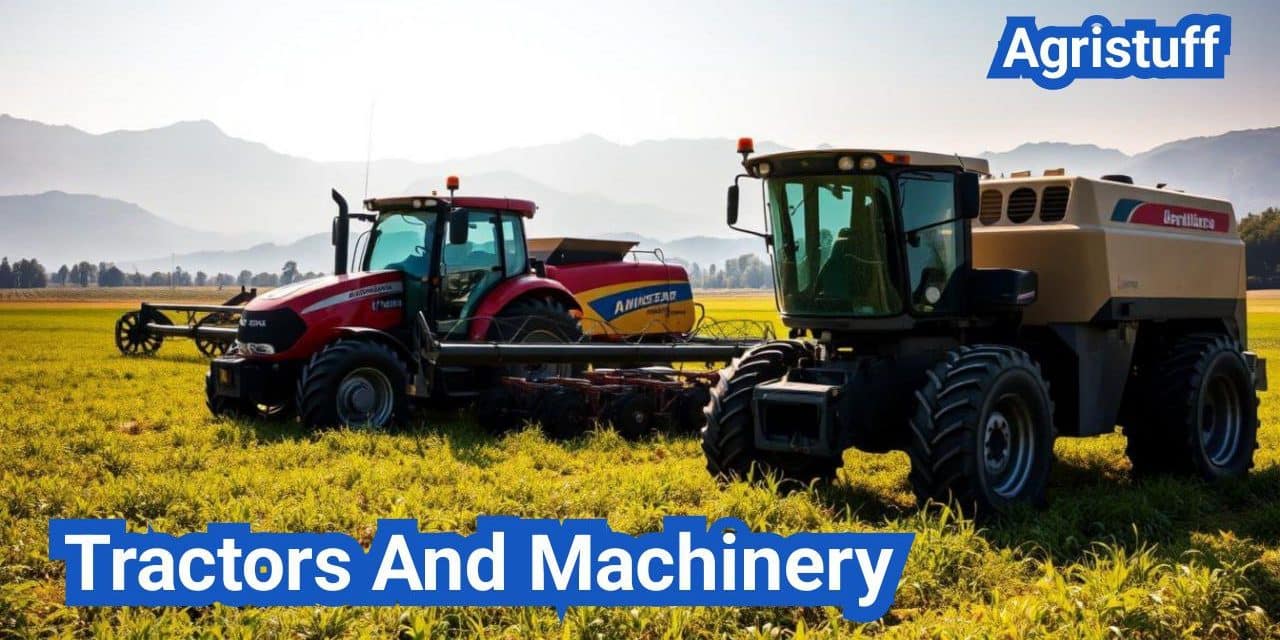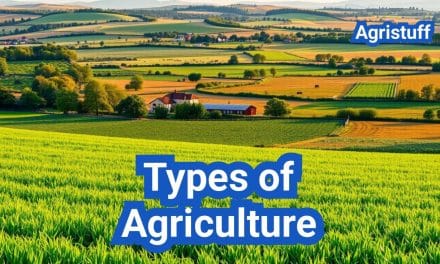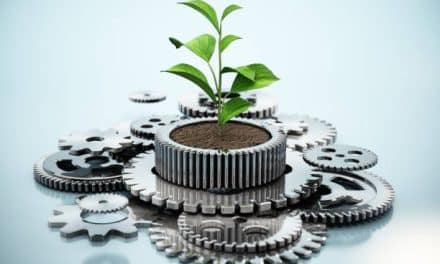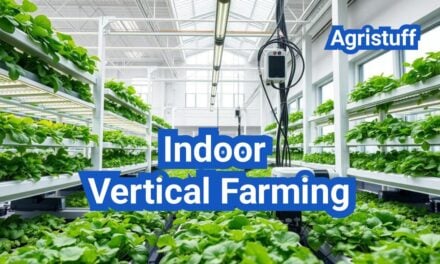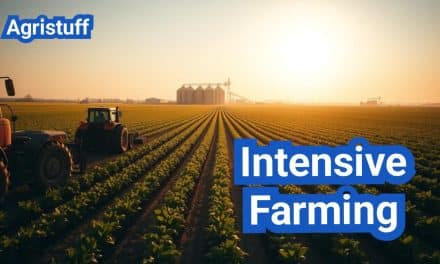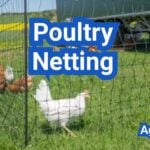Tractors play a vital role in the agriculture industry, serving as a crucial piece of equipment for various tasks such as plowing, tilling, and hauling. John Deere farm equipment is a well-known brand that offers a range of tractors and machinery designed to meet the needs of farmers.
Agricultural equipment, including tractors, can be fitted with various attachments like tillers, aerators, and rotary cutters, making them versatile for different farming operations. The use of farming machinery has significantly improved agricultural productivity and efficiency.
Key Takeaways
- Tractors are essential for various agricultural tasks.
- Attachments like tillers and aerators enhance tractor versatility.
- John Deere is a prominent brand in farm equipment.
- Agricultural equipment improves farming productivity.
- Farming machinery is crucial for modern agriculture.
The Evolution of Tractors and Machinery in Agriculture
The evolution of tractors has played a pivotal role in shaping modern agriculture, enhancing productivity, and efficiency. The journey of tractors from their inception to the present day is a testament to human innovation and the quest for improved farming practices.
Historical Development of Farm Equipment | Tractors And Machinery
The first tractors were steam-powered and primarily used for threshing grain and aiding in construction. The transition to gas-powered tractors marked a significant milestone in agricultural mechanization. Over time, tractors became more powerful, efficient, and versatile, incorporating various technologies to enhance their functionality.
The introduction of tractors revolutionized farming by reducing manual labor, increasing the scale of farming operations, and improving crop yields. The development of different types of tractors, such as utility tractors, row crop tractors, and compact tractors, catered to various agricultural needs, further expanding the scope of farming.
Impact on Modern Agricultural Productivity | Tractors And Machinery
The impact of tractors on modern agricultural productivity cannot be overstated. Tractors have enabled farmers to cultivate larger areas more efficiently, contributing to increased food production. Modern tractors are equipped with advanced technologies such as GPS guidance, precision farming tools, and telematics, which enhance their performance and contribute to sustainable farming practices.
The use of tractors has also facilitated the adoption of conservation tillage, reduced soil erosion, and improved soil health. By mechanizing farming operations, tractors have helped reduce labor costs and improve the overall profitability of farming enterprises.
Types of Tractors for Different Agricultural Needs
Tractors are the backbone of modern farming, coming in various types to suit different needs. The diversity in tractor designs caters to the wide range of tasks performed in agriculture, from plowing and tilling to hauling and harvesting.
Utility Tractors | Tractors And Machinery
Utility tractors are versatile machines used for a variety of tasks on farms and ranches. They are often equipped with front-end loaders, backhoes, and other attachments that make them suitable for tasks like loading, digging, and material handling. Their versatility and power make them a staple in many agricultural operations.
Row Crop Tractors | Tractors And Machinery
Row crop tractors are specifically designed for farming row crops like corn, soybeans, and cotton. These tractors have high ground clearance and narrow profiles to navigate between crop rows without damaging the plants. They are typically equipped with advanced technology, including GPS guidance systems, to optimize planting, spraying, and harvesting operations.
“The use of row crop tractors has revolutionized the way we farm, allowing for greater efficiency and precision in crop management.”
Orchard and Vineyard Tractors
Orchard and vineyard tractors are designed for use in fruit and nut orchards, as well as vineyards. These tractors are built with a low profile to navigate under low-hanging trees and vines, and they often feature narrow tires to minimize soil compaction and damage to crops. Their design enables farmers to perform tasks like pruning, spraying, and harvesting with ease.
Garden and Compact Tractors
Garden and compact tractors are ideal for small farms, homesteads, and landscaping tasks. They are smaller and more maneuverable than larger tractors, making them perfect for tight spaces and smaller acreages. These tractors can be used for a variety of tasks, including mowing, tilling, and hauling, and they are often equipped with attachments like snow blowers for year-round utility.
In conclusion, the type of tractor chosen depends on the specific needs of the agricultural operation. By understanding the different types of tractors available, farmers can select the most appropriate machine for their tasks, enhancing productivity and efficiency.
Major Tractor Manufacturers and Their Specialties

The global agricultural landscape is dominated by several key tractor manufacturers, each bringing their unique strengths to the table. These industry leaders have been instrumental in shaping modern farming practices through their innovative products and commitment to quality.
John Deere: America’s Iconic Brand | Tractors And Machinery
John Deere is one of the most recognized names in the agricultural machinery sector. Known for their iconic green tractors, John Deere has a long history of producing high-quality equipment that meets the diverse needs of farmers worldwide. Their product lineup includes a range of tractors suitable for various applications, from small farms to large commercial operations.
Case IH: Performance and Technology | Tractors And Machinery
Case IH is another prominent player in the tractor manufacturing industry, renowned for its high-performance tractors equipped with advanced technology. Their tractors are designed to enhance productivity and efficiency on the farm, featuring innovations such as precision farming capabilities and comfortable operator environments.
Kubota: Japanese Engineering Excellence | Tractors And Machinery
Kubota is a Japanese company that has made significant inroads into the global tractor market with its compact and utility tractors. Kubota’s products are appreciated for their reliability and versatility, making them a popular choice among farmers with smaller landholdings or specific agricultural needs.
Massey Ferguson: Global Presence | Tractors And Machinery
Massey Ferguson is a well-established brand with a global presence, offering a wide range of tractors that cater to different farming requirements. Their products are known for their durability and performance, and the company has a strong network of dealers and service providers across the world.
In conclusion, these major tractor manufacturers have not only contributed significantly to the agricultural sector but continue to drive innovation and efficiency in farming practices. Their diverse product offerings and commitment to quality have made them leaders in the industry.
John Deere Farm Equipment Through the Ages
The history of John Deere farm equipment is a story of continuous innovation and adaptation, reflecting the company’s commitment to meeting the evolving needs of farmers and agricultural professionals.
Historical Milestones and Innovations | Tractors And Machinery
John Deere’s journey began in 1837 when John Deere, a blacksmith, developed the first commercially successful steel plow. This innovation was crucial for the agricultural industry, as it allowed farmers to till the soil more efficiently. Over the years, John Deere farm equipment has continued to evolve, introducing numerous groundbreaking technologies.
One of the significant milestones was the introduction of the first John Deere tractor in 1918, known as the “Dain All-Wheel Drive Tractor.” This was followed by various models that incorporated advanced features for their time, such as power take-off (PTO) and hydraulic systems.
Current John Deere Agricultural Equipment | Tractors And Machinery
Today, John Deere offers a wide range of agricultural equipment, including tractors, combines, planters, and hay tools. Their current lineup is characterized by advanced technology, including precision agriculture features like GPS guidance and yield monitoring. John Deere tractors, for instance, are known for their reliability, power, and comfort, making them a preferred choice among farmers.
The company’s commitment to innovation is evident in its development of electric and autonomous tractors, signaling a new era in farming technology.
John Deere Vintage Tractors
Vintage tractors hold a special place in the hearts of many collectors and enthusiasts. John Deere has produced some iconic models over the years, such as the Model B and the 4020. These tractors are not only valued for their historical significance but also for their durability and performance.
Restoring and maintaining these vintage machines has become a hobby for many, preserving a piece of agricultural history.
The Future of Farming: Electric Tractors and Sustainable Technology

The agricultural sector is on the cusp of a revolution with the advent of electric tractors and sustainable technology. As concerns about climate change and environmental sustainability continue to grow, the farming industry is under increasing pressure to reduce its carbon footprint.
One of the most significant developments in this area is the emergence of electric tractors. Companies like John Deere and Monarch Tractor are at the forefront of this innovation, developing electric models that promise to transform the industry.
John Deere Electric Tractor Development | Tractors And Machinery
John Deere, a legendary name in agricultural machinery, has been investing heavily in the development of electric tractors. Their efforts are focused on creating machines that not only reduce emissions but also maintain the high performance standards that farmers expect.
The benefits of electric tractors include lower operating costs, reduced noise pollution, and decreased dependence on fossil fuels. John Deere’s electric tractors are designed to be compatible with existing farming practices, making the transition to more sustainable technology smoother for farmers.
Monarch Tractor and Other Electric Innovations | Tractors And Machinery
Monarch Tractor is another key player in the electric tractor market. Their tractors are designed with advanced technology, including autonomous capabilities, which can significantly enhance farming efficiency and productivity.
Other companies are also entering the electric tractor market, bringing with them innovative solutions and technologies. This competition is driving rapid advancements in the field, benefiting farmers and the environment alike.
Environmental and Economic Benefits | Tractors And Machinery
The adoption of electric tractors and sustainable technology in farming offers numerous environmental and economic benefits. By reducing emissions, farmers can contribute to a cleaner environment and help mitigate climate change.
Economic benefits include lower fuel and maintenance costs over time. Electric tractors can also provide a more stable and potentially lower cost of ownership, as they have fewer moving parts compared to traditional diesel engines.
In conclusion, the shift towards electric tractors and sustainable technology represents a significant step forward for the agricultural sector. As technology continues to evolve, we can expect to see even more innovative solutions emerge, further transforming the industry.
Understanding Tractor Sizes: From Compact to the Biggest Tractors
From compact tractors ideal for small-scale farming to the largest tractors used in commercial agriculture, the range of tractor sizes is vast.
Small Tractors for Homesteads and Small Farms | Tractors And Machinery
Small tractors are perfect for homesteads and small farms where space is limited and tasks are less demanding. These compact tractors are versatile, easy to maneuver, and consume less fuel. They are ideal for tasks such as mowing, tilling small areas, and hauling light loads.
Mid-Size Tractors for Versatile Applications | Tractors And Machinery
Mid-size tractors strike a balance between power and maneuverability, making them suitable for a wide range of tasks and farm sizes. They offer more horsepower than compact tractors and are capable of handling heavier tasks such as plowing and tilling larger areas.
Big Tractors for Commercial Agriculture | Tractors And Machinery
Big tractors are designed for commercial agriculture, where high power and efficiency are crucial. These tractors can handle demanding tasks such as deep tillage, heavy hauling, and large-scale planting. Their larger size and more powerful engines enable farmers to cover more ground in less time.
The Biggest Tractors in the World | Tractors And Machinery
The largest tractors in the world are marvels of engineering, designed for the most extensive agricultural operations. These giant tractors are equipped with powerful engines and advanced technology, enabling them to undertake massive tasks with ease. They are typically used on very large farms or for specialized agricultural projects.
In conclusion, understanding the different sizes of tractors is essential for selecting the right equipment for specific agricultural needs. Whether you’re managing a small homestead or a large commercial farm, there’s a tractor size that’s right for you.
Essential Tractors and Machinery for Modern Farming

The backbone of modern agriculture is formed by essential tractors and farming equipment. Modern farming requires a diverse range of machinery to improve efficiency and productivity across various tasks.
Combines and Harvesting Equipment | Tractors And Machinery
Combines are crucial for harvesting crops efficiently. These machines combine multiple operations like reaping, threshing, and winnowing into a single process, significantly reducing labor and time. Modern combines are equipped with advanced technology, including GPS and yield monitoring systems, to optimize harvesting.
Other harvesting equipment includes forage harvesters and potato harvesters, each designed for specific crops. Forage harvesters are used for cutting and chopping silage, while potato harvesters are specialized for gently lifting potatoes from the soil.
Planting and Seeding Machinery | Tractors And Machinery
Planting and seeding machinery are vital for efficient crop establishment. Modern planters and seeders are designed to precision-place seeds at the correct depth and spacing, enhancing crop yields. These machines can be equipped with GPS guidance to ensure accurate planting patterns.
Air seeders and grain drills are other types of planting equipment used for different crops and soil conditions. Air seeders use pneumatic systems to distribute seeds, while grain drills open furrows, place seeds, and cover them in a single pass.
Tillage Equipment | Tractors And Machinery
Tillage equipment is used to prepare the soil for planting by loosening and aerating it. This category includes plows, cultivators, and harrows. Plows are used for initial soil preparation, turning over the soil to a significant depth.
Cultivators and harrows are used for secondary tillage, breaking down the soil into a finer texture and removing weeds. Modern tillage equipment is designed to minimize soil disturbance and preserve moisture.
Hay and Forage Equipment | Tractors And Machinery
Hay and forage equipment are essential for livestock farming, used for cutting, drying, and baling hay and other forage crops. Mowers and conditioners are used for cutting and preparing the crop for drying.
Rakes and tedders are used to turn and dry the hay, while balers compress the dried hay into manageable bales. Modern balers can produce large round or square bales, depending on the farmer’s needs.
| Equipment Type | Primary Use | Key Features |
|---|---|---|
| Combines | Harvesting grains | GPS, yield monitoring, threshing mechanism |
| Planters/Seeders | Precision planting | GPS guidance, precision seed placement |
| Plows | Primary tillage | Soil turning, depth control |
| Mowers/Conditioners | Cutting hay/forage | Cutting mechanism, crop conditioning |
How to Choose the Right Tractor for Your Needs

Choosing a tractor that meets your specific needs can significantly impact your agricultural productivity. With various factors to consider, farmers can select a tractor that enhances their farming operations.
Step1: Assess Your Land Size and Requirements | Tractors And Machinery
Before selecting a tractor, it’s essential to assess your land size and specific requirements. Consider the terrain, soil type, and the tasks you need to perform. For instance, if you have hilly or uneven terrain, you may require a tractor with four-wheel drive capability.
Additionally, think about the implements you need to use with your tractor. Different tractors are suited for different types of implements, so it’s crucial to choose a tractor that is compatible with the equipment you need.
Step2: Determine Necessary Horsepower | Tractors And Machinery
The horsepower of a tractor is a critical factor in determining its ability to perform various tasks efficiently. Tractors with higher horsepower are generally more capable of handling demanding tasks, such as plowing heavy soil or hauling heavy loads.
However, it’s also important to consider the trade-offs between horsepower and fuel efficiency. A tractor with too much horsepower for your needs may consume more fuel than necessary, increasing your operating costs.
Step3: Evaluate Transmission Options | Tractors And Machinery
The transmission of a tractor plays a vital role in its performance and efficiency. There are several types of transmissions available, including manual, semi-automatic, and continuously variable transmissions (CVT).
Manual transmissions offer more control over the tractor’s speed and torque, while semi-automatic and CVT transmissions provide greater ease of use and can improve fuel efficiency.
Step4: Consider Comfort and Ergonomics | Tractors And Machinery
Operator comfort and ergonomics are often overlooked but are crucial factors in reducing fatigue and improving productivity. A comfortable operator is more likely to work efficiently and make fewer mistakes.
Look for tractors with features such as adjustable seating, good visibility, and intuitive controls. Some modern tractors also offer advanced features like air conditioning, suspension seats, and ergonomic design.
By carefully considering these factors, farmers can choose a tractor that meets their specific needs and enhances their agricultural productivity.
Understanding Front Loader Tractors and Implements

Front loader tractors have become indispensable in modern agriculture due to their versatility and efficiency. These tractors can be equipped with a variety of implements, making them highly adaptable to different farming needs.
Front Loader Selection and Capabilities | Tractors And Machinery
Selecting the right front loader for your tractor is crucial for maximizing its potential. Front loaders are available in different sizes and capacities, and the choice depends on the tractor’s horsepower and the tasks at hand.
The capabilities of front loaders include loading and unloading materials, digging, and scraping. They are also useful for handling heavy objects and materials around the farm.
Backhoes and Excavation Equipment | Tractors And Machinery
Backhoes are another essential implement that can be used with front loader tractors. They are designed for digging and excavation tasks, making them invaluable for tasks such as laying pipes or digging foundations.
The combination of a front loader and backhoe on a single tractor creates a highly versatile machine capable of performing a wide range of tasks without the need for additional equipment.
Mowers and Cutting Implements
Mowers and cutting implements are used for maintaining fields and pastures. They come in various types, including rotary mowers and flail mowers, each designed for specific cutting tasks.
These implements are crucial for keeping vegetation under control and preparing fields for planting. They can be easily attached to front loader tractors, enhancing their utility.
Plows, Discs, and Cultivation Tools
Plows, discs, and other cultivation tools are fundamental for soil preparation. They help in turning over the soil, removing weeds, and preparing the seedbed.
Different types of plows and discs are available, including moldboard plows and disc harrows, each serving a specific purpose in soil preparation and cultivation.
| Implement | Primary Use | Benefits |
|---|---|---|
| Front Loader | Loading/Unloading, Digging | Versatility, Efficiency |
| Backhoe | Digging, Excavation | Precision, Capability |
| Mowers | Cutting Vegetation | Field Maintenance |
| Plows and Discs | Soil Preparation | Improved Soil Quality |
Tractor Pricing Guide: What to Expect and How to Budget

When it comes to purchasing tractors, whether new or used, understanding the pricing landscape is key to making an informed decision. The cost of tractors can vary significantly based on several factors, including size, brand, features, and condition.
New Tractor Price Ranges by Size and Brand
New tractors are available across a wide price range, from a few thousand dollars for small, compact models to over $200,000 for large, high-powered tractors equipped with advanced technology. Utility tractors, which are versatile and suitable for a variety of tasks, typically range from $20,000 to $80,000. Row crop tractors, designed for large-scale farming operations, can cost anywhere from $100,000 to over $300,000.
The brand of the tractor also plays a significant role in determining its price. Premium brands like John Deere and Case IH tend to be priced higher than more budget-friendly options like Kubota. For instance, a new John Deere row crop tractor can cost upwards of $250,000, while a Kubota utility tractor might be available for around $30,000.
Used Tractor Market: Finding Value
The used tractor market offers a range of options for buyers looking to save on costs. Used tractors can be purchased at significantly lower prices than their new counterparts, but it’s crucial to inspect them thoroughly for any signs of wear or needed repairs. Prices for used tractors vary widely based on factors like age, condition, and original price.
A well-maintained used tractor from a reputable brand can offer excellent value. For example, a 5-year-old utility tractor with average usage might be available for 60% of its original price. Buyers should research the market value of the tractor model they’re interested in and inspect the tractor carefully before making a purchase.
Financing Options and Considerations
Financing is a common practice when purchasing tractors, as they are significant investments. Various financing options are available, including loans from banks, agricultural financing institutions, and manufacturer-provided financing plans. It’s essential to compare these options to find the one that best suits your financial situation.
When considering financing, factors such as the interest rate, repayment term, and any down payment requirements should be carefully evaluated. Some financing plans may offer promotional rates or flexible repayment terms, which can be beneficial for managing cash flow.
Tractor Lease Options and Benefits
Leasing tractors is another viable option for farmers and agricultural businesses. Leasing allows for the use of tractors without the upfront cost of purchasing, which can be advantageous for managing capital. Lease terms can vary, typically ranging from 3 to 5 years, and may include options to purchase the tractor at the end of the lease.
The benefits of leasing include lower initial costs, the ability to upgrade to newer models more frequently, and potential tax benefits. However, it’s crucial to review the lease agreement carefully, understanding any mileage limitations, wear and tear charges, and the total cost over the lease term.
Essential Tractor Maintenance for Longevity

Proper tractor maintenance is crucial for extending the lifespan of your equipment and ensuring optimal performance. Regular checks and servicing can help prevent breakdowns, reduce repair costs, and maintain the overall health of your tractor.
Daily and Weekly Maintenance Checks
Daily inspections are vital for identifying potential issues before they become major problems. Check the tractor’s fluid levels, including engine oil, coolant, and hydraulic fluid, to ensure they are at the recommended levels. Inspect the tires for proper inflation and signs of wear. Weekly checks should include examining the air filter, belts, and hoses for any signs of damage or wear.
Key daily checks:
- Fluid levels
- Tire pressure and condition
- Warning lights and gauges
Key weekly checks:
- Air filter condition
- Belt and hose condition
- Battery condition and terminals
Seasonal Maintenance Requirements
Seasonal maintenance is critical for preparing your tractor for the changing demands of different seasons. Before the planting season, ensure that your tractor is serviced, and all necessary repairs are made. In the winter, consider using winter-grade fuels and lubricants, and protect your tractor from freezing temperatures.
| Season | Maintenance Task |
|---|---|
| Spring | Service engine, check fluids, inspect tires |
| Summer | Check cooling system, inspect belts and hoses |
| Fall | Prepare for winter, check battery condition |
| Winter | Use winter-grade fuels, protect from freezing |
Fluid and Filter Change Schedules
Regular fluid and filter changes are essential for maintaining your tractor’s performance. Engine oil should be changed every 50-100 hours of operation, or as recommended by the manufacturer. Hydraulic fluid and filters should also be changed according to the manufacturer’s schedule.
Common Issues and Troubleshooting
Understanding common issues and how to troubleshoot them can save time and reduce downtime. Common problems include hydraulic leaks, electrical system faults, and engine performance issues. Refer to your tractor’s manual for troubleshooting guides and consider keeping a maintenance log to track repairs and servicing.
Common Issues:
- Hydraulic leaks
- Electrical system faults
- Engine performance issues
By following these maintenance tips and staying proactive, you can extend the life of your tractor and ensure it continues to operate efficiently.
Precision Agriculture: Technology in Modern Tractors and Machinery

The advent of precision agriculture has transformed the agricultural landscape, leveraging cutting-edge technology in tractors and equipment. This revolution is significantly enhancing farming practices, making them more efficient and productive.
GPS and Guidance Systems
One of the cornerstone technologies in precision agriculture is GPS and guidance systems. These systems enable farmers to navigate their fields with precision, reducing overlap and ensuring that every inch of land is utilized effectively. GPS guidance allows for accurate planting, spraying, and harvesting, thereby optimizing crop yields and reducing waste.
The use of GPS technology also facilitates the creation of detailed field maps, which can be used to monitor and manage crop health, soil conditions, and moisture levels. This data-driven approach to farming enables more informed decision-making and improved agricultural productivity.
Yield Monitoring and Mapping
Yield monitoring and mapping are critical components of precision agriculture. By equipping tractors and combines with yield monitors, farmers can collect real-time data on crop yields across their fields. This information is then used to create detailed yield maps, which help identify areas of high and low productivity.
Yield mapping allows farmers to analyze the factors contributing to variations in crop yields, such as soil type, moisture levels, and fertilizer application. By understanding these factors, farmers can make targeted adjustments to optimize crop production and reduce environmental impact.
Variable Rate Technology
Variable Rate Technology (VRT) is another key technology in precision agriculture. VRT enables farmers to apply inputs such as seeds, fertilizers, and pesticides at varying rates across a field, based on specific conditions. This targeted approach ensures that resources are used more efficiently, reducing waste and environmental impact.
- Optimize input application based on soil conditions and crop needs
- Reduce waste and environmental impact
- Improve crop yields and quality
Telematics and Remote Monitoring
Telematics and remote monitoring technologies are transforming farm management by providing real-time data on tractor and machinery performance. Farmers can monitor equipment operation, track location, and receive alerts on maintenance needs, enabling proactive management and reducing downtime.
The integration of telematics in tractors and machinery also facilitates data analysis, helping farmers to optimize their operations and make data-driven decisions. By leveraging these technologies, farmers can improve efficiency, productivity, and profitability.
How to Buy Used Tractors and Machinery Safely

The process of acquiring used tractors involves several critical steps to avoid potential pitfalls. Buying used agricultural equipment can be a cost-effective way to meet your farming needs, but it demands careful research and inspection.
Research Models and Common Issues
Before purchasing used tractors or machinery, it’s essential to research the models you’re interested in. Look into the common issues associated with those models, such as frequent repairs or known mechanical problems. This step can help you make an informed decision and avoid models with a history of reliability issues.
Inspection Checklist for Used Equipment
Inspecting used equipment is crucial to ensure you’re getting a reliable machine. Here’s a basic inspection checklist:
| Inspection Area | What to Look For |
|---|---|
| Exterior Condition | Signs of wear, rust, or damage on the body and tires |
| Engine Condition | Oil leaks, excessive smoke, or unusual noises |
| Hydraulic System | Leaks, damaged hoses, or malfunctioning hydraulic components |
| Electrical System | Flickering lights, dead batteries, or faulty wiring |
Verify Maintenance Records
Verifying the maintenance records of used tractors or machinery is vital. Maintenance records can provide insight into how well the equipment has been cared for. Look for records of regular maintenance, such as oil changes, filter replacements, and any repairs made.
Test Operation and Performance
Before finalizing the purchase, test the used tractors or machinery to ensure they operate as expected. Check for any unusual noises, vibrations, or performance issues. Testing the equipment under typical working conditions can help you identify any potential problems.
By following these steps, you can significantly reduce the risks associated with buying used tractors and machinery, ensuring a safe and reliable purchase that meets your agricultural needs.
The Future of Tractors and Machinery in Agriculture
The future of tractors and machinery in agriculture is poised for significant transformation, driven by technological advancements and the need for sustainable farming practices. Electric tractors, precision agriculture, and innovative farming techniques are set to revolutionize the industry.
As agriculture technology continues to evolve, farmers can expect improved efficiency, reduced environmental impact, and enhanced productivity. The adoption of electric tractors, for instance, is expected to reduce greenhouse gas emissions and operating costs. Precision agriculture, enabled by GPS and guidance systems, will continue to optimize crop yields and minimize waste.
Sustainable farming practices will play a crucial role in shaping the future of agriculture. By leveraging advanced machinery and technology, farmers can promote eco-friendly practices, conserve resources, and ensure a more sustainable food supply. As the industry moves forward, it is clear that the future of tractors and machinery in agriculture will be characterized by innovation, sustainability, and a commitment to meeting the world’s growing food demands.
FAQ
What are the different types of tractors available for agricultural needs?
There are several types of tractors available, including utility tractors, row crop tractors, orchard and vineyard tractors, and garden and compact tractors, each designed for specific tasks and applications.
What are the major tractor manufacturers and their specialties?
Major tractor manufacturers include John Deere, Case IH, Kubota, and Massey Ferguson, each known for their unique features, innovations, and product lines.
What is the significance of John Deere’s history and current products in agriculture?
John Deere is a pioneering brand in agriculture, known for its historical milestones, innovations, and current product lines, including their electric tractor development and sustainable technology.
What are the benefits of electric tractors and sustainable technology in farming?
Electric tractors and sustainable technology offer several benefits, including reduced environmental impact, lower operating costs, and improved efficiency, making them an attractive option for modern farming.
How do I choose the right tractor for my specific needs?
To choose the right tractor, consider factors such as land size, necessary horsepower, transmission options, comfort, and ergonomics, and assess your specific requirements and needs.
What are the essential tractors and machinery needed for modern farming?
Essential tractors and machinery include combines, planting and seeding equipment, tillage equipment, and hay and forage equipment, each playing a critical role in modern farming operations.
How do I maintain my tractor for longevity?
Regular maintenance checks, seasonal maintenance, fluid and filter changes, and troubleshooting common issues are essential for extending the life of your tractor.
What is precision agriculture, and how is it used in modern tractors and machinery?
Precision agriculture involves the use of advanced technologies, including GPS guidance, yield monitoring, variable rate technology, and telematics, to optimize farming operations and improve efficiency.
How do I buy used tractors and machinery safely?
To buy used tractors and machinery safely, research models and common issues, inspect the equipment, verify maintenance records, and test operation and performance before making a purchase.
What are the different sizes of tractors available, and what are their uses?
Tractors come in various sizes, from compact tractors for small farms and homesteads to big tractors for commercial agriculture, each designed for specific tasks and applications.
What are front loader tractors and implements used for?
Front loader tractors and implements are used for a variety of tasks, including loading and unloading materials, excavation, and other applications, and are available in different types and configurations.
How do I budget for a new or used tractor?
To budget for a tractor, consider factors such as the purchase price, financing options, leasing options, and ongoing maintenance and operating costs.
Conclusion of: Tractors And Machinery
Tractors and machinery form the backbone of modern agriculture, significantly transforming farming practices and productivity levels. Farmers rely heavily on these powerful tools to carry out essential tasks such as plowing, planting, harvesting, and transportation. Understanding the critical role tractors and machinery play in agriculture helps highlight their importance in enhancing efficiency and productivity in farming.
What are Tractors and Machinery?
Tractors and machinery refer to the mechanical equipment used primarily in agriculture to facilitate farming activities. Tractors are vehicles specifically designed to deliver high torque at low speeds, making them ideal for towing agricultural implements and machinery. Machinery encompasses various types of equipment, including plows, seeders, harvesters, sprayers, and balers, which work in conjunction with tractors to perform specific agricultural tasks.
Types of Tractors and Machinery
There are several types of tractors and machinery, each serving different agricultural purposes:
- Compact Tractors Compact tractors are small-sized tractors suitable for gardening, landscaping, and small-scale farming. They are versatile and can handle various attachments. External Link: Compact Tractor Guide
- Utility Tractors Utility tractors are medium-sized and highly versatile, commonly used for tasks such as mowing, tilling, and hauling loads. External Link: Utility Tractor Information
- Row Crop Tractors Row crop tractors are specifically designed for planting, fertilizing, and cultivating crops in rows. They feature adjustable track widths to accommodate different row spacings. External Link: Row Crop Tractor Details
- Industrial Tractors Industrial tractors are robust and used primarily in construction, landscaping, and heavy lifting. They have sturdy designs suitable for challenging environments. External Link: Industrial Tractor Use
- Implement Carrier Tractors These specialized tractors carry implements for specific agricultural tasks, such as spraying and harvesting. External Link: Implement Carrier Guide
Popular Types of Agricultural Machinery
- Plows Plows are essential machinery used to turn over the soil, preparing it for planting by bringing nutrients to the surface. External Link: Plow Basics
- Seed Drills Seed drills are agricultural devices used to sow seeds at precise depths and intervals, improving crop yields. External Link: Seed Drill Techniques
- Combine Harvesters Combine harvesters are multifunctional machines designed for harvesting grain crops by performing reaping, threshing, and cleaning simultaneously. External Link: Combine Harvester Insights
- Sprayers Sprayers apply fertilizers, pesticides, and herbicides evenly across fields to protect and nourish crops. External Link: Crop Spraying Technologies
- Balers Balers compress crops such as hay and straw into compact bales for easy handling and storage. External Link: Baling Equipment
Advancements in Tractors and Machinery
Technological advancements have revolutionized tractors and machinery, increasing their efficiency and ease of use. Innovations such as GPS-guided systems, autonomous tractors, precision farming tools, and eco-friendly engines have significantly enhanced farming productivity. External Link: Precision Farming Innovations
Benefits of Using Tractors and Machinery
Utilizing tractors and machinery in farming offers several benefits:
- Increased Efficiency: Machinery completes tasks faster than manual labor, significantly boosting productivity. External Link: Efficiency in Farming
- Reduced Labor Costs: Machinery minimizes the need for manual labor, reducing overall farming costs. External Link: Reducing Labor Costs
- Enhanced Crop Quality: Precision machinery ensures accurate planting, fertilizing, and harvesting, improving overall crop quality. External Link: Improving Crop Quality
- Environmental Benefits: Modern equipment designed for precision agriculture reduces wastage of inputs, thus minimizing environmental impact. External Link: Environmental Impact
Maintaining Tractors and Machinery
Proper maintenance of tractors and machinery is crucial to ensure they operate efficiently and have a long lifespan. Routine inspections, regular servicing, and timely repairs prevent breakdowns and extend equipment life. External Link: Machinery Maintenance Guide
Safety Tips for Operating Tractors and Machinery
Operating tractors and machinery requires careful adherence to safety guidelines:
- Always use personal protective equipment (PPE).
- Regularly inspect equipment before use.
- Follow manufacturer instructions precisely. External Link: Farm Equipment Safety
Final Thought
Tractors and machinery are vital components of modern agriculture, significantly enhancing efficiency, productivity, and sustainability. Understanding the various types, benefits, advancements, and maintenance practices of agricultural equipment helps farmers make informed decisions to optimize their farming operations.
Secondary Related Keywords: farm tractors, agricultural equipment, farming machinery, tractor technology, agriculture machines, agricultural implements, tractor maintenance.

